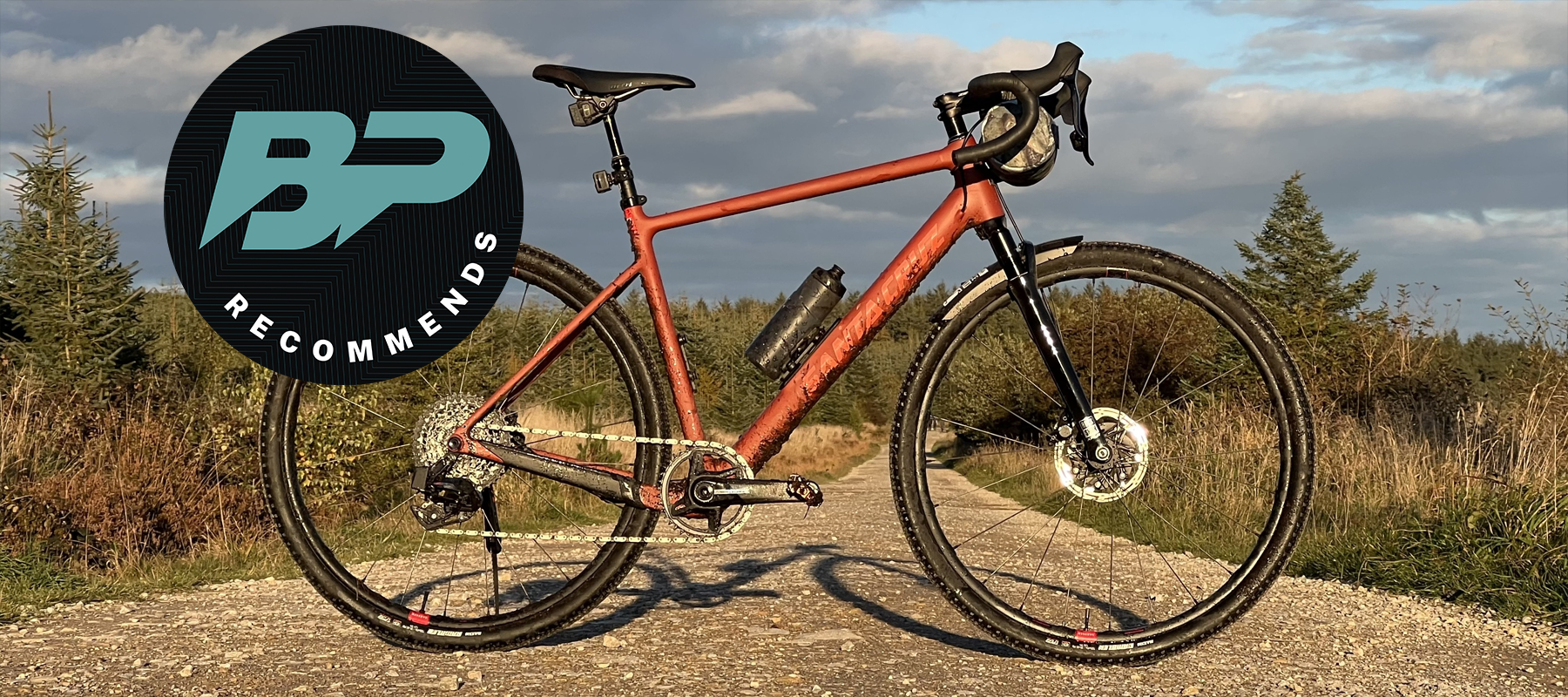Bike Perfect Verdict
Stigmata has gained significant weight but it's way more capable off-road thanks to superbly balanced, stabilized handling, big tire clearance and a seemingly smooth ride. Internal storage and UDH hanger are a practical and future proofing win too and it's not as painfully priced as you might expect for a Santa Cruz.
Pros
- +
Super confident MTB style geometry
- +
Extensive internal storage
- +
Lifetime frame and rim warranty
- +
Terrain smoothing suspension fork and seat post
- +
UDH hanger and 50mm tire clearance
Cons
- -
Heavy frame
- -
Limited cargo attachment points
Why trust BikePerfect
Santa Cruz’s latest Stigmata Force 1X AXS RSV gravel bike is way more mountain bike oriented than their previous more cyclo-cross-style bikes. It’s more progressive and next-tech loaded than most other gravel bikes too. But does a heavier, slacker frame with short travel suspension open up more doors than the pure performance losses shut? Guy Kesteven has been racing epic gravel events, exploring and goofing about in the woods to find out.
Geometry
I’m going to flip around the normal frame-then-figures format here as the numbers are the headline news with the new Stigmata. The 69.5-degree head angle is a degree slacker than Santa Cruz’s Highball XC hardtail from 2017 and 2.5 degrees slacker than the previous Stig. It also gets an average of 30mm more reach (420mm on the Large tested) and the rear center is 5mm longer than before at 430mm on all sizes. Add the longer, suspension-corrected fork which slackens the head angle means the 1087mm wheelbase is 62mm longer on this Stigmata than the previous one.
While the geometry has been stabilized, the frame is dramatically different on either side of the 27.2mm seat tube. The back end uses slim, dropped stays and hooked chain stays for 50mm tire clearance on 1x bikes. As well as a removable front mech mount for twin ring fans, Santa Cruz has added SRAM mech future-proofing and easy spares finding by using a SRAM UDH hanger.
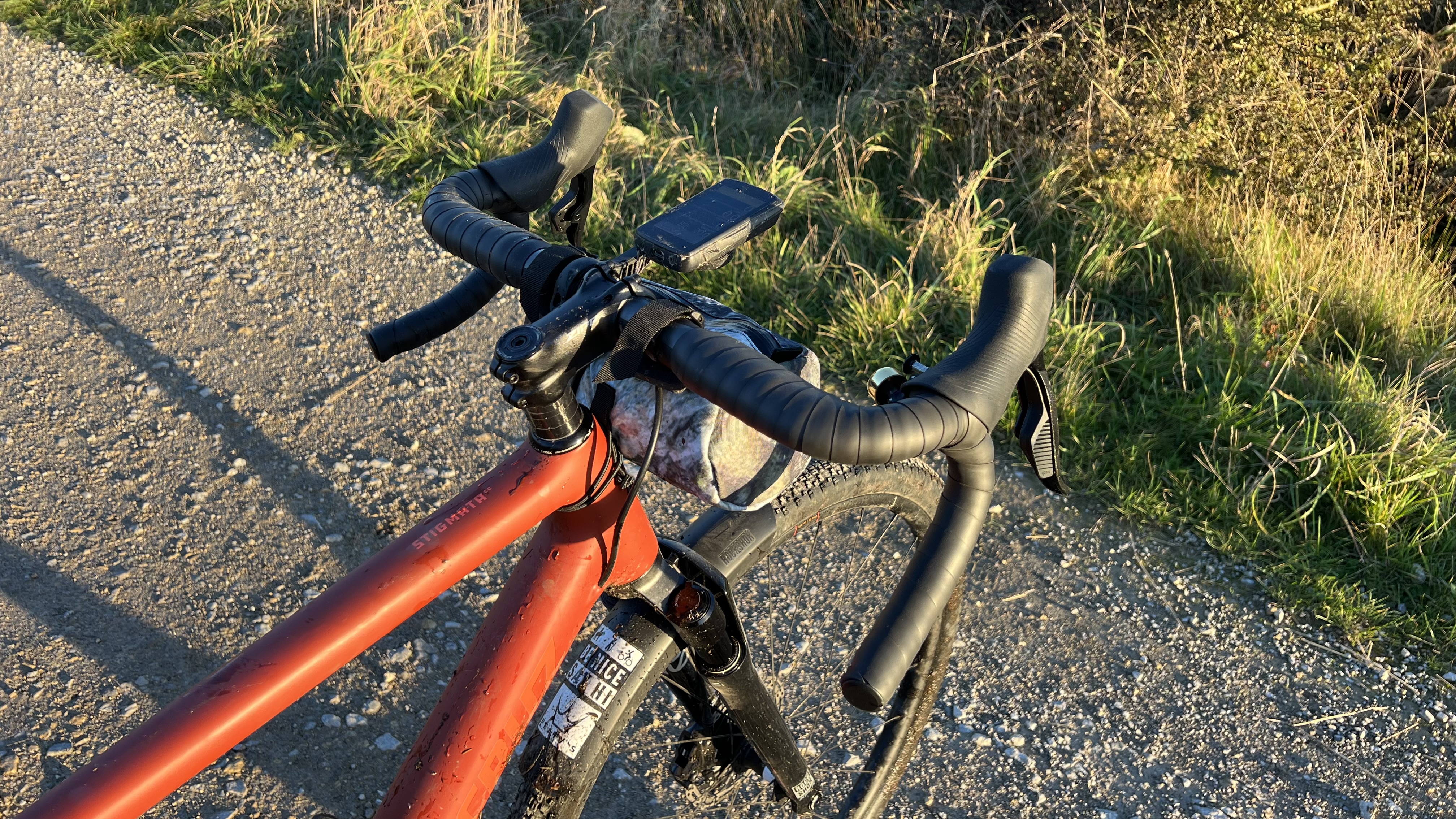
Design
Moving to the mainframe the obvious change is a much bigger downtube complete with the ‘Glovebox’ internal storage Santa Cruz has introduced across all their recent mountain bike refreshes. The solidly latched lid, weatherproofing gasket and frame stiffening surround add weight, but you get a really useful amount of storage. Tubes, pumps, high volume CO2 cartridges, and multi-tools can be fitted into the two neoprene ‘Tube Purse’ and ‘Tool Wallet’ sleeves provided and you’ll maybe even get a tightly rolled windbreaker in if you’re determined.
Peering into the hatch reveals the gear and dropper cable/brake hose trunking tubes bonded inside the frame, and plugs are supplied for the unused entries and exits if you’re using a wireless kit. There's even a small hatch in the super deep BB area to help you guide a seatpost cable in the right direction. Santa Cruz has resolutely stayed away from internal headset routing across their MTB range though and the new Stig is no different. Another practical detail is that the large square metal head badge acts as a useful rub plate to stop bar bags from chewing into paint and carbon over time.
The head tube geometry isn’t just slacker but it’s re-jigged to allow for the extra length of the suspension-corrected rigid fork or the 40mm travel RockShox Rudy Ultimate fork the Force 1X model comes with as standard.

While you get three bottle cage mounts and hidden fender mounts on the frame and rigid fork, Santa Cruz has consciously avoided adding extra bolt mounts for racks and direct mount bags for ‘aesthetic and weight saving’ reasons. Even though it’s only available in a premium ‘CC’ spec composite layup at the moment the large frame I built weighed 2.97lbs / 1350g with rear axle and seat clamp etc. That puts it in the heavy/heavy duty category compared to race bikes like the sub 800g Specialized Crux or 930g Scott Addict Gravel which are well below a kilo. The flat mounts for the brakes are 160mm direct for hard and heavy use and mountain bikers will be pleased to see a Burgtec rear axle. The frame and fork are covered by Santa Cruz’s lifetime defect warranty and there’s no rider weight limit either so you’re getting a tough bike.

Components and build
Santa Cruz currently only offer SRAM based complete bikes ranging from the $3,999 / £3,899 / €3,999 for Apex to $7,699 / £6,999 / €8,299 for the Force 1X AXS RSV with RockShox Rudy Ultimate suspension fork and Rockshox Reverb AXS XPLR dropper/suspension seat post tested here. That’s a $700 / £400 / €800 upcharge over the Force 2X AXS version, but given RRPs of $1,476 / £1,333 / €1,550 for the fork and post combined. It's a real bargain if you want some bounce between you and the trail. The RockShox gear does add 2.25lbs / 1.02kg of weight according to Santa Cruz’s figures, bringing my sample bike in at 9.6kg with fender on the fork but no pedals or frame bags inside.
That includes 550g, 700 x 45mm Maxxis Rambler EXO carcass tires on 25mm internal width, lifetime warrantied but impressively lightweight (1360g) Reserve 25|GR carbon rimmed wheels. These come with high flow Reserve Gilmore valves as standard although we’ve had mostly poor results with Reserve’s Smurf blue sealant so we’d change that sooner rather than later.
SRAM’s Force XPLR group has a great grip feel, braking benefits from the larger 160mm rotors and shifting is fast, accurate and intuitive. The 10-44T cassette is probably a good compromise for most gravel riders too. Given the out there capability of the geometry and suspension, plus the fact it’s a bike from a mountain bike brand a 10-52 ‘mullet’ set up with an MTB rear mech potentially seems like a missed opportunity. Conversely, while a power meter is a useful resource for racers or folk serious about training, having a power crank on a gravel bike with suspension seems like a surplus for the target audience.
Dropping or raising the post by pressing both shifters works really well once you learn not to accidentally do a shift at the same time. Doing a micro drop to engage the suspension function of the seat post is a lot harder to master but worth it to save your spine from drops and rock/root wallops and improve seated comfort overall.
A short 70mm stem complements the long reach geometry with slightly flared Zipp XPLR bars in a moderate 440mm width and saddle is a Ti railed WTB piece. The silicon Velo bar tape helps wet grip but isn’t particularly padded so you could go thicker there.
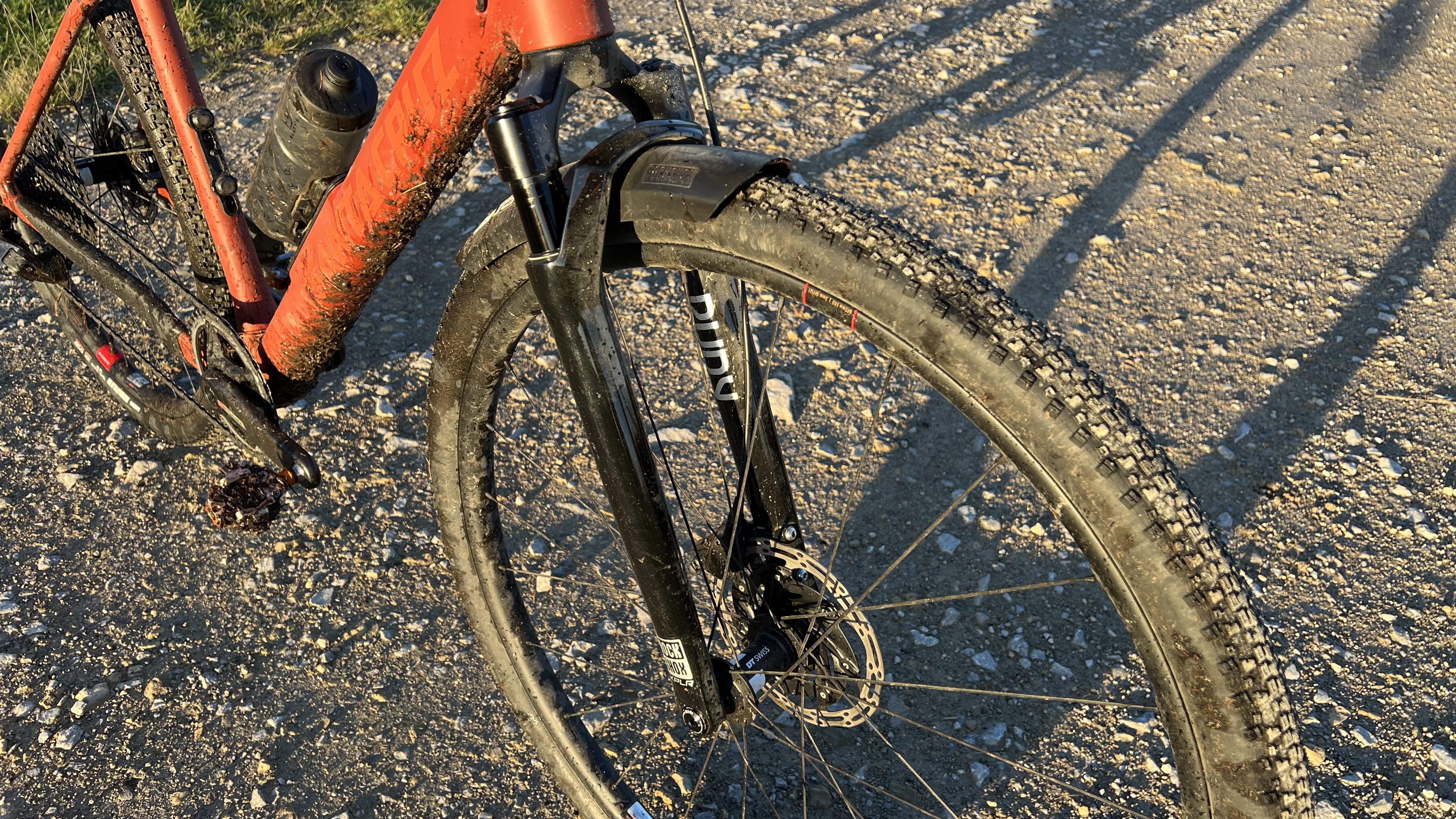
Ride, handling and performance
Santa Cruz certainly isn’t the first to push a radical geometry agenda on gravel, and not the most extreme either if you consider bikes like the Evil Chamois Hagar. What they have done is got the balance spot on. Even if you’re coming from a roadie background and the steering feels slow, it doesn’t lurch or stumble around at low speeds. You’ll also find the extra stability calms hysteria by keeping you online rather than tripping up if things get techy. If you’re a mountain biker the way it drops into turns with well-weighted commitment will feel natural. If you want to push it, the short stem makes it easy to subconsciously ‘Scandi flick’ into turns or tweak traction if things start sliding.
It’s the first gravel bike I’ve been comfortable drifting through fast and loose turns without drama rather than feeling like I’m having to try and do it deliberately. The safe, stable handling looks after you better on longer events by reducing mental fatigue and handling stress too. Perhaps ironically for a bike without any cargo attachment points it handles well with a seat pack and bar bag on and just removing any risk of catching your foot on the front tyre is a major stress reducer. And don’t think getting a drop bar bike to behave well off-road is easy either. It’s way more complex than just copying MTB geometry and I’ve ridden a lot of bikes that prove that in the worst way possible.

In terms of assessing the rest of the performance, there’s a lot of masking going on from the componentry. In terms of pedaling, even if they look relatively fast tread-wise, the soft compound Maxxis tires are draggier than a narrower, harder compound tire on the road. Even though they’re light, the Reserve wheels have a damped vibe and they’re not aero. That extra 2lbs / 1kg of RockShox weight cuts obviously into acceleration and responsiveness out of corners or up climbs too. Even the slower, more stable handling can provoke a cruise rather than charge attitude too. The big downtube, deep bottom bracket area and stout chainstay junction have already powered their way to wins at most top US gravel races this year as well as 5th place at the Gravel World Championships.
Switching tires/wheels and then testing head-to-head with the Trek Checkpoint SL6 proved it’s no slouch through the pedals even with a decidedly average motor delivering the watts. So while psychologically it might feel more laid back than most gravel bikes, it's clearly not lacking in podium potential from a physical perspective.
It’s difficult to judge the smoothness of the bike too. With the RockShox Ruby fork open and seat post in suspension mode, it takes the sting out of impacts and reduces fatiguing jarring of shoulders, hands and back for greater comfort overall. With a bit of set-up fettling to get pressures right the movement of the fork and seat post isn’t so much it feels like you’re losing efficiency on smoother surfaces either. The fact they let you charge across roots and rocks with much less worry about killing tires or being knocked offline means you can go way harder and faster on rougher or just unseen trail sections.
The ‘driftability’ of the Stig is also undoubtedly improved by the suspension. If you lock out the fork it’s presumably a lot harsher in feel than the conventional carbon fork would be, but with no spare forks currently available I can’t say where the ‘rigid’ feel would sit between ‘open’ Rudy and ‘locked’ Rudy. I have tried the conventional Zipp post that comes with the Force 2X bike instead of the locked Reverb post though and I can confirm that’s a far more forgiving experience. Add the fat Ramblers and you’ve got a conspicuously comfy bike (at the back end at least) and you can go even fatter with the rubber if you want.
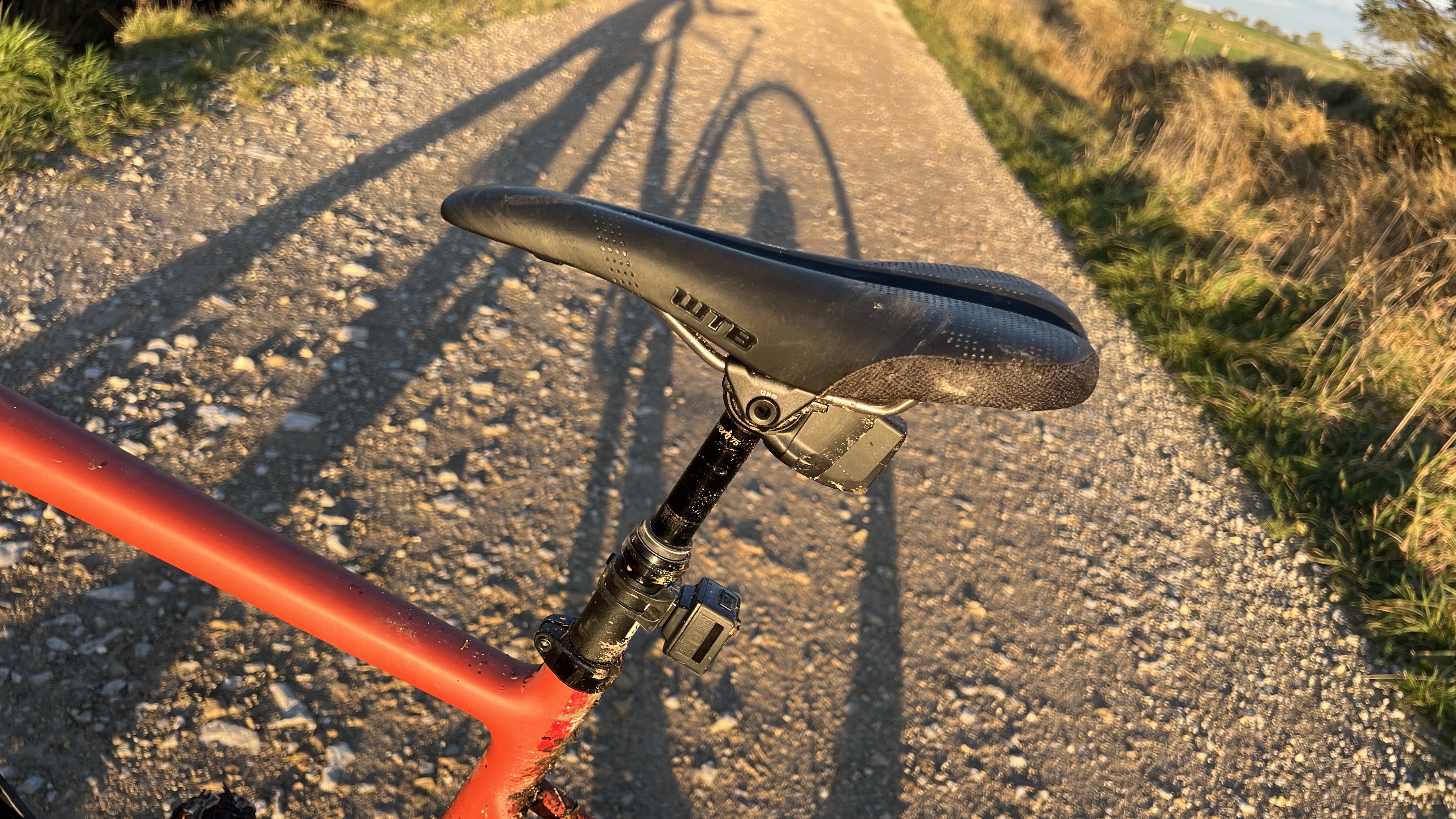
Verdict
As you’ll have gathered, there’s some conflict going on here. A lot of it isn’t actually to do with the core bike either so I’ll try and break it down in the hope I can make things clearer.
Whether you’re a roadie who wants more confidence when things get sketchy off-road or a mountain biker who wants familiarity and the ability to get sideways or stupid steep in style then the new Stig handling is brilliant. Being able to stuff most of your essentials inside the frame is far more useful than you probably realize until you try it too. And if you’re into your speed it’s also a more aero solution than external bags (Canyon Grail fairings excepted).
Look past the tires, the sedative effect of the steering and the extra RockShox weight and it goes pretty well on the pedals too, if not as sharp as a gravel racer like Cervelo’s Aspero. I get the whole ‘keep the frame clean’ vibe too although seeing a ‘fuel tank’ top tube bag strapped onto Keegan Swanson’s unbound winning bike makes me think just some studs in that position wouldn’t be a fixture addition too far. In the same ‘I get it, but…” way I appreciate the 10-44T cassette is probably fine for most. But on a bike, so wild ride ready AND with a UDH hanger fitting a T-Type mech and 10-52T would have been a serious off-piste performance and future-proofing flex.
The whole question of suspension on a gravel bike is a complex one too. There’s no doubt the new Stigmata with its stable geometry and bigger tire clearance can make far better use of it than most other bikes and certainly the previous generation Stig. It’s amazing how much control, speed sustain and comfort 40mm of fork travel and a similar amount of effective seat post movement can give.
I’ve had some really fun rides on this bike even on red grade MTB trails and techy singletrack as well as being glad of the extra control and reduced tire trauma on the 100km the Struggle Borderlands gravel race. Especially as interference with efficiency is minimal as long as you keep your pedaling smooth. Anyone who claims that this bike handles as well as a hardtail mountain bike is pulling your flat top chain though as even with excellent geometry the Zipp bars don’t even have enough flare to give enhanced leverage control and the head down position and sketchy tires will always be far more limiting than even a basic MTB.
Having said that the Stig is certainly the most convincing and enjoyable trail-ready gravel bike I’ve ridden so far though and - assuming you don’t want race weight or tons of bag mounts - it does it with very little compromise in terms of versatile performance elsewhere. Even with relatively draggy tyres, the body position of narrow drop bars will inherently make it faster than an MTB too, so even on mostly off-road rides, you’re winning most of the time. I’ll keep hassling Santa Cruz for a rigid fork so I can test the ‘real’ bike behind this ‘rad’ version though as I’ve got a strong suspicion that’ll be brilliant. I’ll update this test either way if/when I do though.
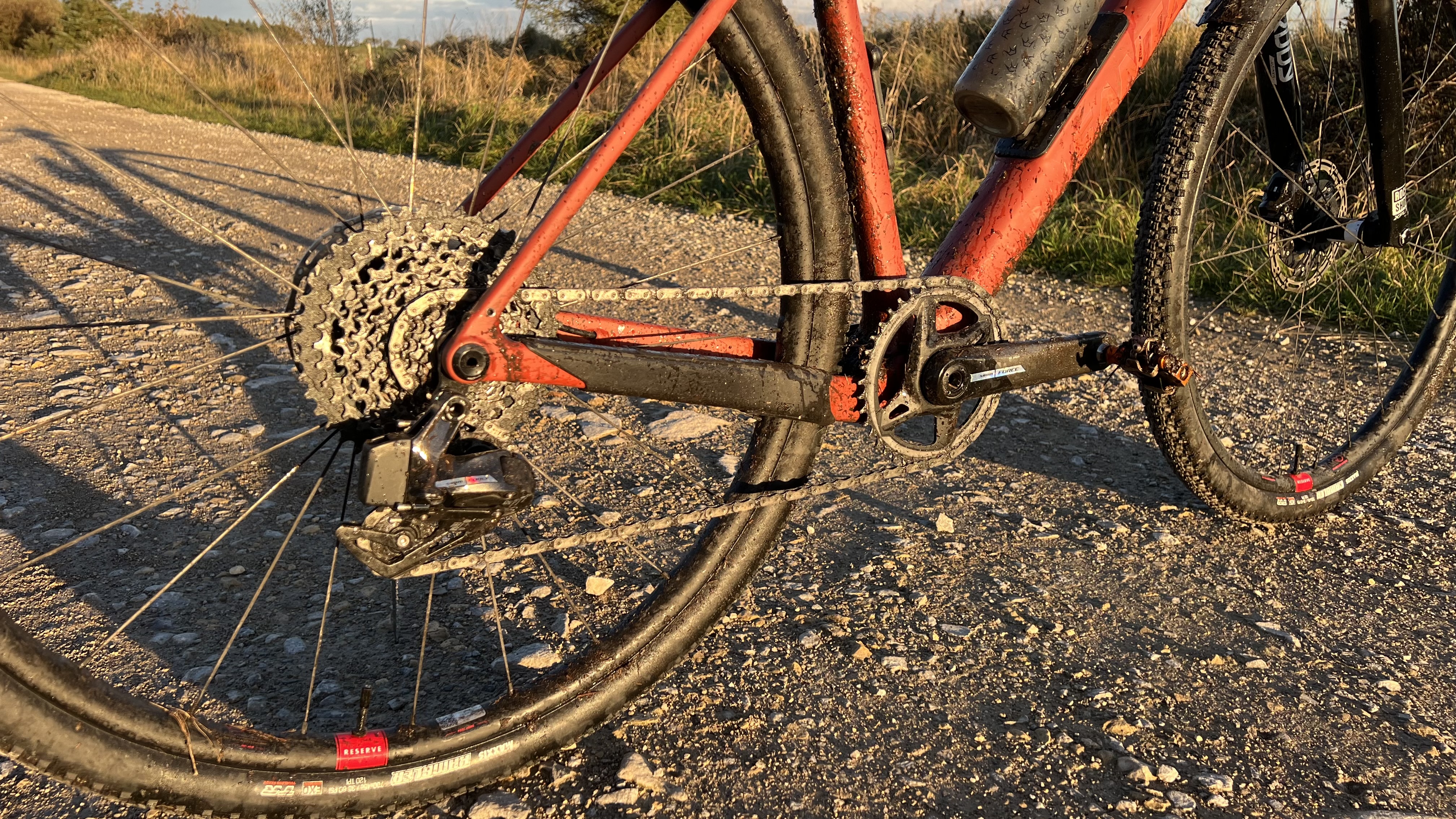
Test conditions
- Surface: Tarmac road to rocks and loam
- Trails: Roads, fire roads, farm tracks, mining/shooting tracks across moors, off piste singletrack through woods, red grade trail centre runs, hacking across fields etc.
- Weather: Blazing sun and 25 degree cramp fests through to soggy 6 degree slogs
Tech specs: Santa Cruz Stigmata Force 1X AXS RSV
- Discipline: Gravel
- Price: $7,699 / £6,999 / €8,299
- Head angle: 69.5 degrees
- Frame material: Carbon CC
- Fork: RockShox Rudy Ultimate XPLR, 40mm travel
- Size: S, M (tested), L, XL
- Weight: 9.6kg
- Wheel size: 700c
- Gears: SRAM Force AXS XPLR wireless 12 speed rear mech and shifters, 40T chainset and 10-44T XG-1271 cassette.
- Brakes: SRAM Force hydraulic disc with 160mm rotors.
- Tires: Maxxis Rambler DC EXO, 700x45mm
- Wheels: Reserve 25|GR carbon rims on DT Swiss 350 hubs
- Bar: Zipp Service Course SL-70 XPLR
- Stem: Zipp Service Course Stem, 70mm
- Seatpost: RockShox Reverb AXS XPLR, 27.2, 75mm dropper
- Saddle: WTB Silverado Medium, Ti

Guy Kesteven has been working on Bike Perfect since its launch in 2019. He started writing and testing for bike mags in 1996. Since then he’s written several million words about several thousand test bikes and a ridiculous amount of riding gear. He’s also penned a handful of bike-related books and he reviews MTBs over on YouTube.
Current rides: Cervelo ZFS-5, Specialized Chisel, custom Nicolai enduro tandem, Landescape/Swallow custom gravel tandem
Height: 180cm
Weight: 69kg
